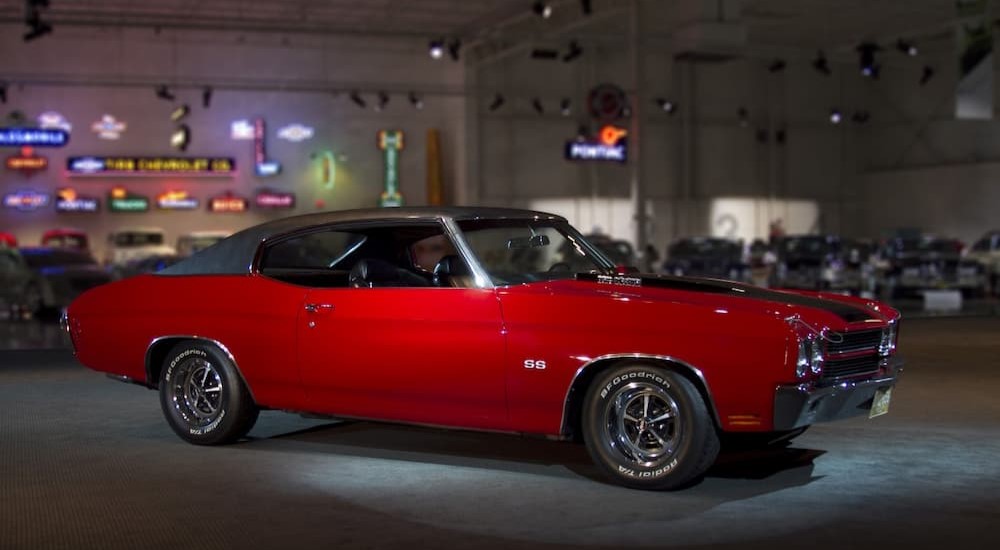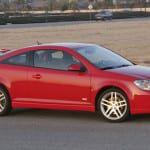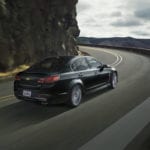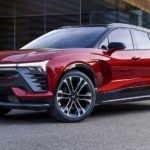Chevrolet changed the automotive landscape when William Durant and Louis Chevrolet opened the company’s doors to make high-performance models more affordable and accessible to the masses. Although it seemed contradictory that a vehicle could be or offer both, Chevrolet has proven otherwise over the last century. We see this incredible combination at every new and used Chevy dealership nationwide, especially in discontinued Chevy sedans that have lived long past their glory days.
Chevrolet’s history is lush with discontinued models, with the American automotive pioneer no stranger to rekindling and breathing new life into old nameplates. We have seen it with the Blazer and Trailblazer, but what about Chevrolet’s former sedans? From the Chevelle in Charlie’s Angels and the iconic SS to the Gone in 60 Seconds Impala, why haven’t these legendary sedans returned to the Chevy lineup? More importantly, what makes these models appealing to Chevy enthusiasts and car collectors alike?
Meet the Chevelle: The Midsize Icon
If you have ever heard the phrase “quality over quantity,” then it is easy to understand why Chevelle’s brief 13-year tenure in the Chevy lineup was enough to earn its legendary status. Debuting in 1964, the Chevelle immediately turned heads as a midsize muscle car that perfectly reflected the spirit of its generation. With a visually striking aesthetic and plenty of options for customization, the Chevelle became a best-seller for Chevrolet, inspiring the American automotive pioneer to find ways to eke out more power from the unsuspecting powerhouse.
By the 1970s, there was no question the Chevelle was a showstopper as it debuted with the legendary Big Block V8 454ci engine. The powerplant produced over 350 horsepower, but Chevrolet didn’t stop there, tuning the LS6 to 450 horsepower for the track. If there was any question of the Chevelle’s power before, the 1970 Chevelle mitigated every doubt and sealed the muscle car’s fate in history. Although it was eventually discontinued in 1977, the Chevelle remains a fan favorite and even a star on the silver screen, with thousands of film credits in blockbusters like Jack Reacher and The Fast and the Furious.
Meet the SS: The Sleeper
The Chevrolet SS is one of the most unsuspecting powerhouses on our list and, undoubtedly, in Chevy history. In production from 2014 to 2017, the SS proves that looks can be deceiving. At first glance, it is everything you expect from a large Chevy sedan, from its sophisticated exterior to its plush interior with premium heated and ventilated seating and intricate details. It is a perfectly packaged car, but there is far more to the SS than what meets the eye, just as Chevy intended.
“The Chevrolet brand was largely built on the strength of rear-drive performance sedans, yet it’s been 17 years since we’ve offered one,” Chevrolet announced when it introduced the SS in 2014. “The all-new Chevrolet SS fills that void and fills it better than any other vehicle in the brand’s rich history. The comfort, convenience, spaciousness, and V8 power make the SS a total performance package unlike any other on the road today.”
Chevrolet introduced the Super Sport lineup in the 1960s, differentiating models like the 1966 Impala SS 427, 1970 El Camino SS 396, and 1996 Impala SS with potent engines that could answer any need for speed. By 2014, the SS returned to the Chevy fleet as a standalone model powered by a 6.2L V8 engine that produced 415 horsepower and 415 lb-ft of torque for a sprint from 0 to 60 MPH in 4.7 seconds. Chevy sweetened its packaging by adding a Magnetic Ride Suspension tuned for performance and Brembo brakes to craft the ultimate sleeper powerhouse.
Meet the Impala: The Unsuspecting Monster
It is fitting that the Impala is named after one of the most graceful animals in the world. The Impala debuted in the Chevy lineup in 1967 as a concept car inspired by the Corvette but did not officially join the Chevy lineup until 1958 as the Bel Air Impala. As a top-tier trim for the Bel Air, the Impala became a standalone model in 1959 and, by 1961, proved its unsuspecting capability when Chevy debuted its first SS or Super Sport model. The 1961 Impala SS turned heads as it rolled off the production line with a big block V8 engine, setting the stage for the sedan’s future in the fleet.
The Impala remained a prominent fixture in the Chevy family for decades, with Chevy discontinuing and reintroducing the model several times before its last curtain call in 2020. These reintroductions included several SS models, like the 1966 Impala SS 427 Convertible that produced 390 horsepower and 460 lb-ft of torque. By 1996, Chevrolet rekindled interest in the Impala again with an SS model, adding the Corvette’s LT1 V8 engine for a total output of 260 horsepower and 330 lb-ft of torque. These SS models add to the Impala’s appeal on the used lot and its many credits on the silver screen in flicks like Gone in 60 Seconds. But more importantly, Chevy fans appreciate how easy it is to transform a classic Impala into an unsuspecting powerhouse with the heart of a warrior.
Meet the Nova: The Pint-Sized Powerhouse
The Ford Falcon earned widespread acclaim when it debuted in 1960, which meant Chevy had to respond quickly. Chevy returned to the drawing board, tasking its engineers to pull a rabbit out of a hat in seconds with an incredibly small budget. “We worked night and day on that car, and it didn’t take very long to run it through our shop because we had a deadline,” one Chevrolet designer said of the project. “I think that was the quickest program we ever did at any time.”
That project produced the Chevy II Nova, a conventional compact car available as a sedan, wagon, convertible, or coupe. Its many configurations and options for customization heightened its appeal, which Chevy capitalized on in 1963 when it gave the Nova the “SS treatment.” A compact car with a potent engine? It was a match made in heaven.
Despite its compact size, the 1963 Nova SS proved its mighty heart and insatiable need for speed, even as one of the most miniature muscle cars of the generation. The 1963 Nova SS is one of the most sought-after models among collectors because it is the only year Chevy produced the Nova SS as a convertible. So, what about its heartbeat? Although modest by modern standards, the 1963 Nova SS features a 194-ci engine that produces 120 horsepower, which was impressive at the time.
Throughout Nova’s tenure in the Chevy lineup, Chevy expanded its powertrain lineup to include more potent V8 engines. By the mid-to-late 1960s, you could get the Nova with a V8 engine that produced 350 horsepower. However, Chevrolet quickly learned the downfall of being its biggest competitor, as Nova sales threatened the popularity of the Camaro and led to powertrain downgrades for the compact warrior. Even so, the Nova, particularly the SS models, are fan favorites and great finds for collectors looking for a pint-sized powerhouse.
The Pot of Gold at the End of the Chevy Rainbow
Chevrolet has always struck an incredible balance by making exceptional powerhouses accessible to the masses. Throughout the last century, the American automotive pioneer has rarely strayed from its vision, and models like these discontinued sedans prove as much. Every model, from the Nova and the Impala to the SS and the Chevelle, showcases Chevrolet’s unique approach to doing the unthinkable–acknowledging and satiating our need for speed and style.




